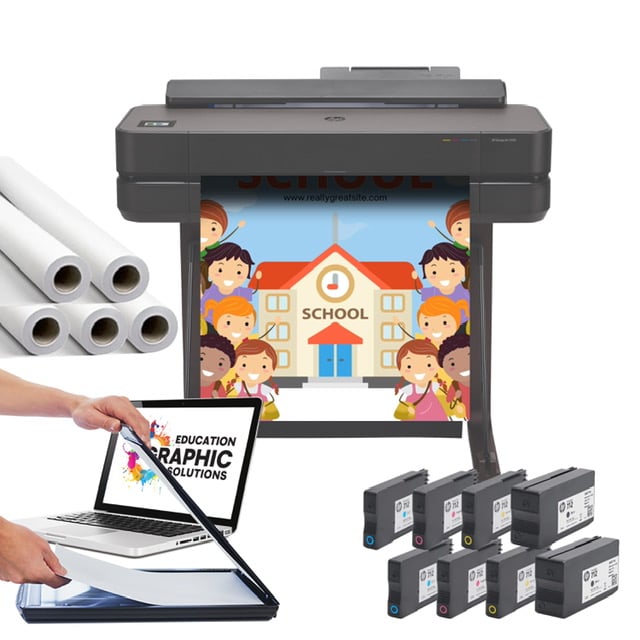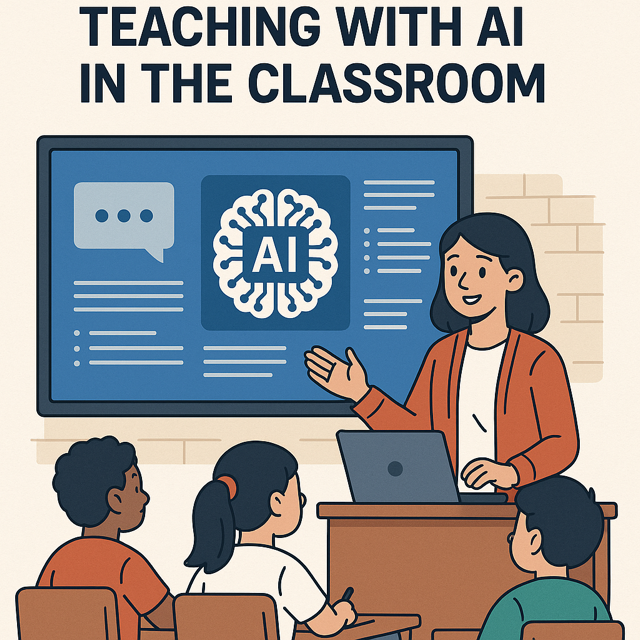
DISCOUNTED EDUCATION PRICING! CALL 1-877-891-8411. We Gladly Accept School Purchase Orders!

The integration of artificial intelligence in education is no longer a futuristic concept—it’s here, and it’s changing the way teachers teach and students learn. From automating administrative tasks to offering personalized learning experiences, AI is transforming classrooms across the globe. But with this innovation comes a flood of questions, challenges, and exciting possibilities.
In this blog post, we’ll explore how teachers can effectively use AI in the classroom, the most popular tools available today, concerns around AI and job displacement, and practical examples of AI-enhanced teaching strategies. Whether you’re an educator curious about incorporating technology or a school leader evaluating AI’s role in pedagogy, this post has you covered.
AI isn’t about replacing teachers—it’s about enhancing their ability to teach more effectively. AI in education can help:
An English teacher uses an AI-powered writing assistant like Grammarly or Quillbot to provide instant grammar and style feedback, allowing students to revise their work more efficiently and independently.
This is one of the most common questions educators have.
Answer:
Teachers can use AI tools to support both instruction and administration. Here are a few examples:
Answer:
Here are some widely used and teacher-approved AI tools in 2025:
These tools don’t require advanced technical skills to use and can easily integrate into everyday teaching.
Answer:
No, AI is not replacing teachers. AI is a complementary tool, not a substitute for human connection, emotional intelligence, or classroom management. While AI can automate certain tasks and offer supplemental instruction, it cannot replicate the creativity, empathy, and personal engagement that human teachers bring.
Instead of replacing teachers, AI is reshaping their roles—empowering them to focus more on what truly matters: connecting with students, fostering critical thinking, and inspiring lifelong learning.
Answer:
Answer:
AI-powered adaptive learning systems adjust content difficulty based on student performance. This means students can progress at their own pace. For instance, a math platform might offer additional practice to students struggling with a concept, while more advanced students are challenged with enrichment problems.
Teachers can also use AI to group students based on learning styles, levels, or topics needing review—making small-group instruction more targeted and effective.
Tool Used: ChatGPT
Use: Generates differentiated reading passages on the same historical topic for different reading levels.
Impact: Improved engagement and comprehension across a diverse student group.
Tool Used: DreamBox
Use: Personalized practice sessions tailored to each student’s performance.
Impact: Significant gains in math fluency and student confidence.
While AI offers numerous benefits, educators must also consider:
If you’re just starting out, here’s how to ease into AI use:
AI is no longer just a futuristic idea—it’s part of everyday teaching. Below are ten real, practical, and creative ways educators across subjects and grade levels are using artificial intelligence in the classroom right now.
Tool Example: ChatGPT, Curipod
Teachers input topics, standards, or themes—and receive full lesson plans, differentiated tasks, and even homework suggestions within minutes.
“AI saves me 4–6 hours a week on planning.” — Middle school science teacher, TX
Tool Example: Gradescope, Google Classroom with AI add-ons
AI auto-grades multiple choice and short-answer questions, provides comments on essays, and even flags plagiarism.
Tool Example: DreamBox, Century Tech
AI adapts to students’ skill levels, offering real-time adjustments in difficulty and content pacing.
Tool Example: Grammarly, Quillbot, ChatGPT
Students receive grammar, clarity, and content suggestions to improve writing without waiting for teacher feedback.
Tool Example: Duolingo, ChatGPT in target language
AI-powered chatbots allow students to have full conversations in Spanish, French, or Mandarin for fluency practice.
Tool Example: Canva Magic Write, Microsoft Copilot
Teachers use AI to create worksheets, interactive quizzes, and engaging slides that are visually appealing and standards-aligned.
Tool Example: ClassDojo with AI insights
AI tracks behavior trends and helps identify potential areas for intervention.
Tool Example: Edpuzzle AI quiz generator
AI creates comprehension questions instantly from video content or text passages.
Tool Example: TextHelp, Speechify
AI provides real-time text-to-speech, reading simplification, and personalized pacing for students with IEPs or learning differences.
Tool Example: AI-powered email generators
Teachers use AI to draft professional, friendly messages to parents and caregivers—saving time and improving communication.
AI is not a magic solution, but it is a powerful ally. By embracing AI strategically, teachers can make their classrooms more engaging, inclusive, and effective. The goal isn’t to turn classrooms into tech hubs, but to empower educators to do what they do best—with a little help from intelligent tools.
Remember: The future of education isn’t about AI replacing teachers—it’s about teachers leading the way in how AI is used.
Teaching with AI isn’t just a trend—it’s the next step in the evolution of education. Teachers who thoughtfully adopt AI tools can save time, reach students more effectively, and build more dynamic learning environments. The key is to remain curious, cautious, and confident in your professional judgment as you explore this evolving frontier.
So, what AI tool will you try in your classroom tomorrow?
A trusted K‑12 education platform (Domain Authority ~88). They welcome guest submissions related to tech in the classroom.
🔗 Live link: https://www.edutopia.org/about/your-turn-write-usreddit.comjmorganmarketing.com+3edutopia.org+3edtechreader.com+3
An influential site (DA ~75) focused on innovative teaching and educational technology. While they don’t list public submission guidelines, they regularly accept guest posts—it’s worth pitching your AI‑in‑education blog.
🔗 Live link: https://www.teachthought.com/ (scroll for “Write for Us” or contact their editor)edutopia.org+3jmorganmarketing.com+3reddit.com+3
A major voice in K‑12 EdTech with high domain authority (~80). They explicitly invite contributions to their platform.
🔗 Live link: https://www.edsurge.com/write-for-us edtechreader.com+1jmorganmarketing.com+1